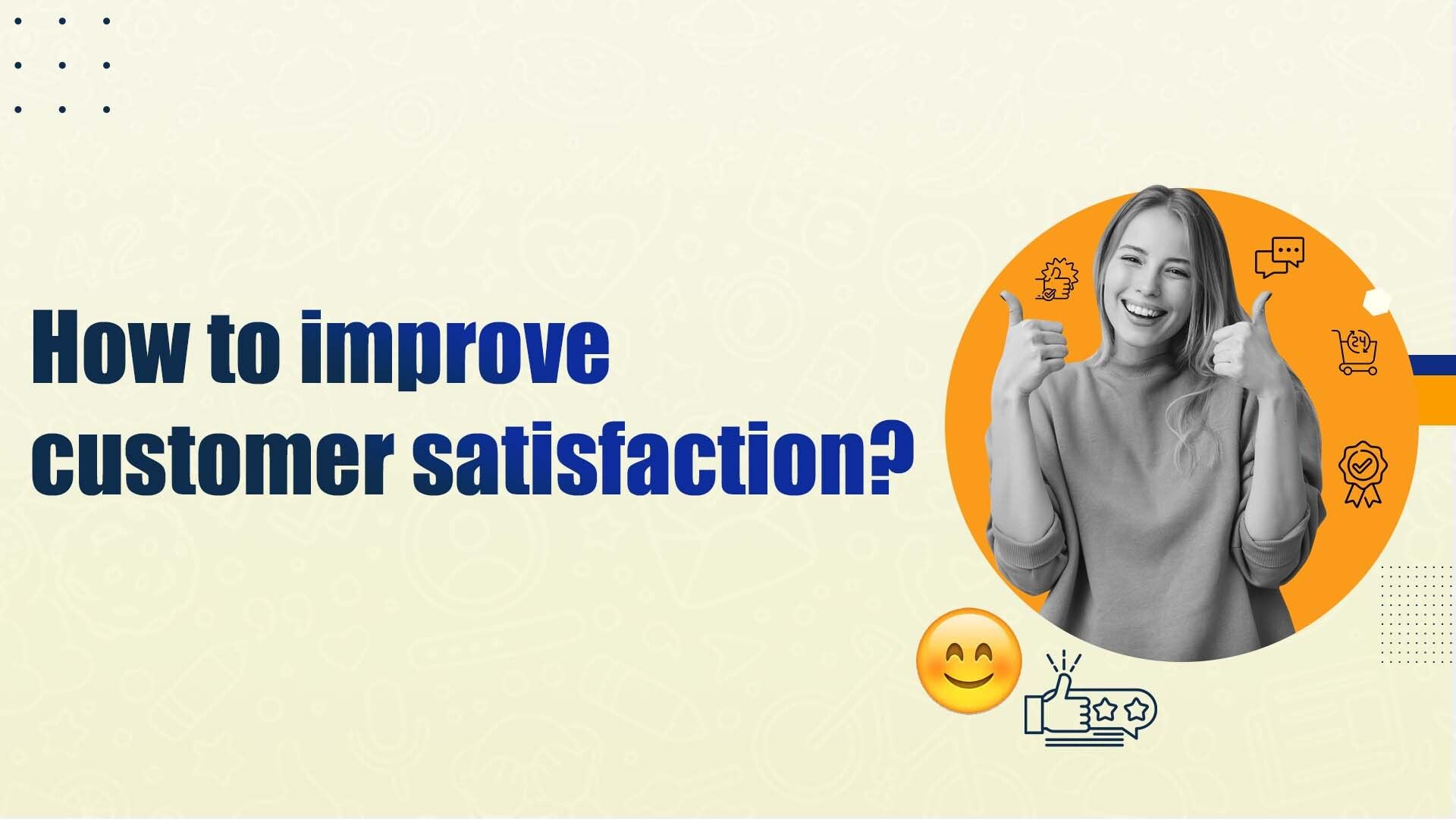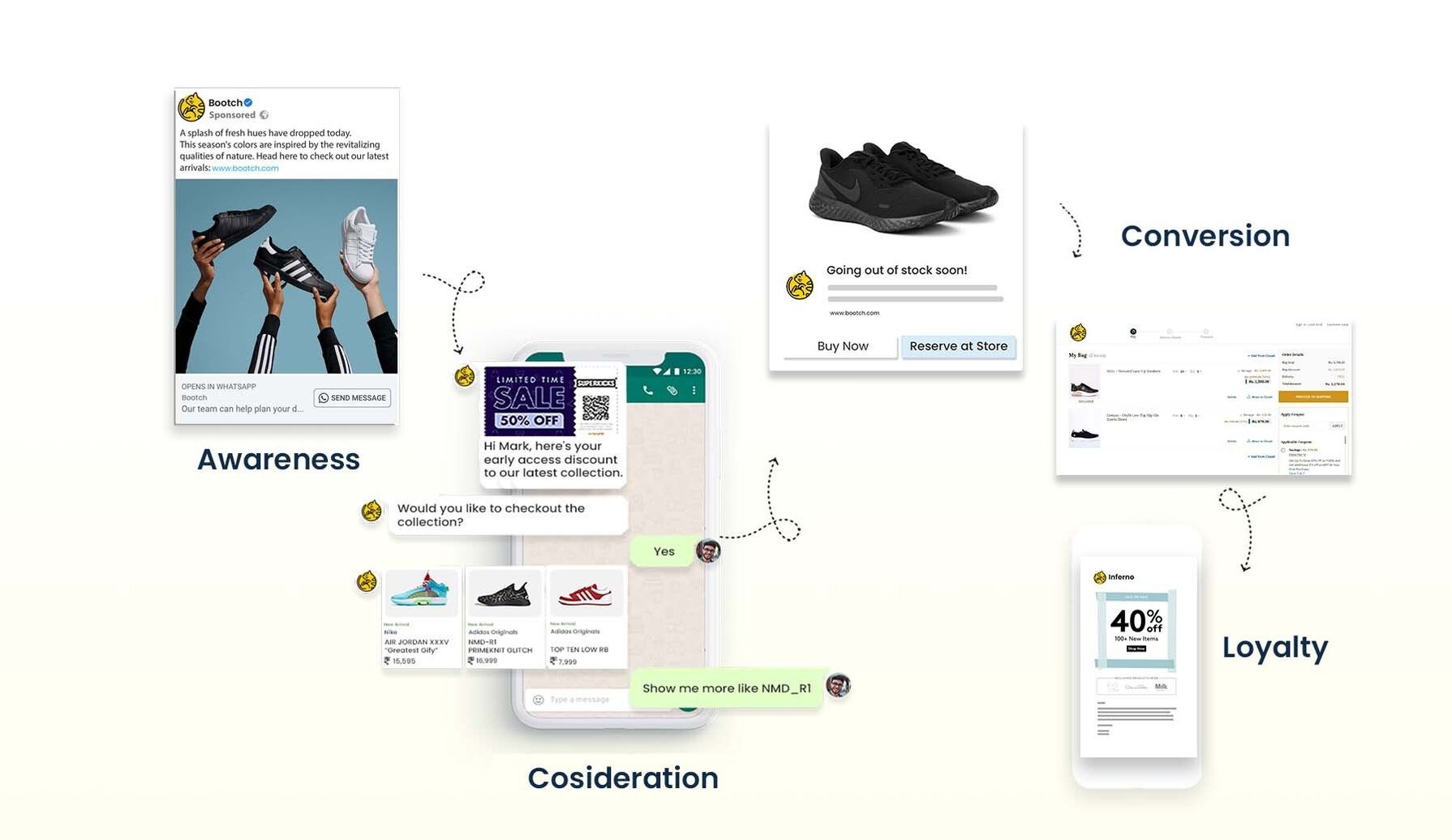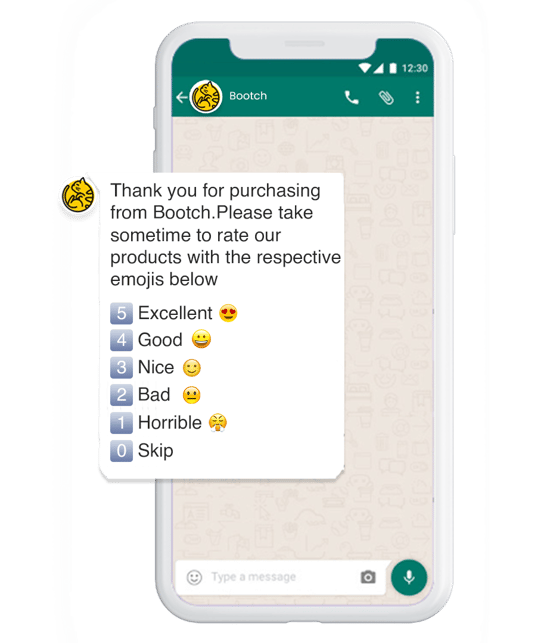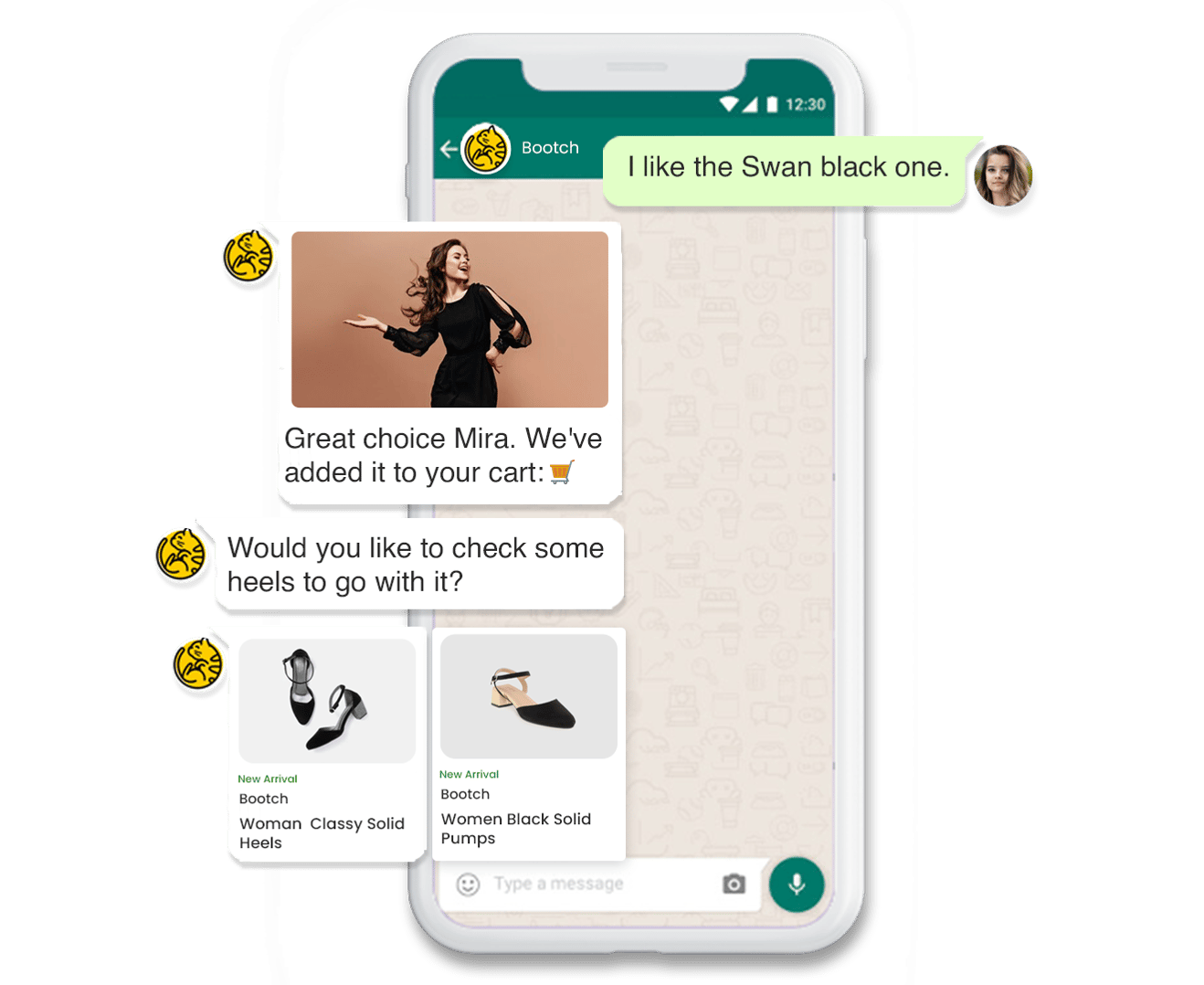A Complete Guide to Customer Experience
Learn how to understand your customer's needs and expectations to create personalized journey's with our comprehensive guide to customer experience
If customers are unhappy, they are more likely to switch to competitors no matter what. Learn how to measure and improve customer satisfaction.

Imagine waking up one fine day only to find out that you are losing your customers to your competitors.
Why?🤔
They pay more attention to how their customers feel about their brand.😬
One of the biggest differentiating factors that define a brand is its alignment with customer satisfaction and customer experience. Hence, in order to create a positive customer experience, brands must analyze and understand behaviors, preferences, and expectations.
In fact, according to Microsoft, 58% of American consumers will switch companies because of poor customer service. (Microsoft)
Customer satisfaction can be defined as the measurement used to quantify the degree to which the customer is satisfied with a product or service. It is a measurement of how a customer feels about a brand.
Without measuring the satisfaction rates, you can’t identify your unhappy customers. It is essential to collect customer feedback to improve customer experience. To stay on top of your competitors, it is important to track data related to satisfaction.
And to collect this you need to conduct customer surveys. You can conduct surveys differently, with a virtual call center, social network, etc. In addition to this, digital analytics can help determine whether the users are researching a goal, how they are interacting with your brand, and where they got stuck in their journey.
Some of the ways to measure your satisfaction rates can include:

A metric used to measure how much your customers are satisfied with their product or service or their overall experience with the brand. This score is used to measure customer retention and product repurchase. It is used to obtain by asking the questions like “how satisfied are you with your experience?” and is usually measured using emojis or on a scale of 1-5, 1-10 etc.
For instance, if you received 30 responses and 20 of them were positive, your CSAT score would be 66% (20/30 = 0.66 X 100 = 66%). This indicates that majority of your customers are satisfied with your products. A good CSAT score is usually between 75% to 85%.

A metric used to measure how likely a customer is willing to recommend their products on a scale of 1 to 10. This metric measures customer experience and business growth. NPS promoter score is usually between 9 to 10. Passives are usually between 7 and 8 while detractors are less than 6. Some of the NPS survey question can include:
✅How likely are you to recommend our brand to a friend or colleague on a scale of 1-10?
✅How likely are you to recommend our company as a potential workplace to your friends on a scale of 1-10?
✅What is the primary reason for your score?
✅What can we do to improve your experience?
✅What was disappointing or missing in your experience with us?
This will help your brand evaluate the likelihood of your customers churning. Although, you want to acquire more customers, retaining your existing customers that can help you boost your ROI.

A metric used to measure how much effort a customer had to put to get their issue resolved. Ease of experience is a better indicator of customer loyalty and this can be measured with a CES survey. You should trigger a CES survey after a customer purchased a product or after a customer spoke to your customer service team. Some of the CES survey questions can include:
✅How much effort did you put in to solve your issue?
✅How fast were you able to solve your problem on a scale of 1 to 10?
✅How knowledgeable and informative was [name of the representative]?
Delivering a consistent customer experience throughout the customer’s journey plays a crucial role in your cx satisfaction rates. Here are the 3Cs of consistency that every brand should pay attention to:

A brand ensuring a consistent experience across the customer journey is already winning. During the shopper’s journey, the customer may encounter a sales rep or a chatbot. In case they have a query it is essential to remain connected across all customer touchpoints. However, not all companies can deliver a consistent customer experience.
For instance, a customer interacts with a brand several times. It begins with landing on an ad published by the brand, followed by online research on whether he wishes to purchase the product. A flow must be defined to ensure consistency across all channels and touchpoints.

A brand must foster trust if it wants to build a relationship with its customers. Positive customer experiences are one of the biggest determinants of cx satisfaction.
For instance, a product arrived late and the customer raised a complaint. How does the brand resolve it? Does the brand take the customer’s emotions into account? One of the ways the brand can resolve this is by offering a discount coupon on their next purchase. This way they can ease the customer’s dissatisfaction and drive repeat purchase.
A brand that pays attention to its customer's reactions will be able to ensure customer loyalty with the right practices.

For any brand, it is essential to ensure that the brand message is consistent across all channels and touchpoints. It is important that customers recognize and understand the delivery of the brand’s message and its promises. For instance, Southwest Airlines built trust consistently by delivering its promise as a low-cost airline. Brands that serve customers consistently while upholding the brand’s motto foster more trust and goodwill.
Brands that want to improve customer experience as a means to increase revenue and reducing costs must focus on consistency.
"Sustaining an audience is hard,” Bruce Springsteen once said. “It demands a consistency of thought, of purpose, and of action over a long period of time.
Read also O2O marketing: What's next?
A happy customer is more likely to become a loyal customer. In fact, a report found that 81% of customers are more likely to engage with businesses that exceed their expectations. However, its not just about giving your customers what they want but about how well your brand responds to their needs. Here are a few tips to make your customers happy:
✅Use customer insights to understand and anticipate what a customer wants and provide it.
✅Create a customer experience that is tailored to attend to their needs
✅Create an omnichannel experience to connect digital shoppers with your physical stores
✅Personalize interactions with customers (Be sure to address them by name)
It may feel like an impossible thing to track or measure. However, there are certain factors and measurement tools that help determine whether your customers are happy with your brand or not. Some of the factors influencing it are as follows:
Convenience differs from one person to another. What is perceived as convenient may not be the same for another person. For instance, one customer may define convenience as having multiple delivery options to choose from whereas another may define it as having multiple payment options. So if a customer finds it difficult to browse, shop, schedule, or buy from your store they are more likely to switch to a more convenient option. In fact, a study found that 97% of consumers have backed out from a purchase because it was inconvenient for them.
Your response time may be apt, your customer service may be on point but if your product quality is not up to the mark, there will be no repeat purchases. To ensure repeat purchases and satisfaction, it is important to offer the best product quality.
In addition to this, if your product is of good quality, it may be reasonable to charge more. However, if your product rates are more than the market rate, it is more likely that customers may not buy from you. Hence, it is essential to maintain a balance between product quality and value.
Customer expectations can be defined as how your customer perceives your product, service, or brand. For instance, a customer wants to buy a dress. They expect the material, color, hem, size to be on point. Customers want these expectations to be met to feel satisfied with their purchase. In fact, a study found that customers are likely to spend 140% more after a positive experience.
A key factor influencing satisfaction is communication. Is it easy for your customers to reach you? Can they get a response from any medium they prefer? Or is your brand using only one or two mediums of communication?
A real-time response through any medium can go a long way to ensure that your customer is satisfied. Using a conversational AI chatbot may be helpful in this case.
For instance, in case a customer has a query about your product, they can immediately text your brand on WhatsApp, get the response they are looking for and complete their purchase on the go. This not only ensures satisfaction but also conversion. A happy customer is more likely to purchase from you than an unhappy customer.
Communication is also a crucial part of complaint handling. Is your brand addressing the customer's concerns or do they have to wait two hours to speak to your representative?
If that’s the case, then it's crucial to focus your efforts on answering simple questions in real-time or having an FAQ section to get the answers your customers are looking for.
Read also Conversational Commerce on Instagram
To ensure cx satisfaction, it is essential to collect data, analyze them and build effective strategies to ensure that your brand is aligned with your customer’s needs. Here are some ways you can achieve it:
To serve your customers better you need to analyze and understand their expectations. A brand that knows its customers, their preferences, their shopping behavior, and history will be able to deliver a personalized experience that helps in conversions.
In fact, a report found that 48% of customers expect personalized service for being a loyal customer. Hence, an excellent way to ensure satisfaction is to offer personalized experiences. When your customers are satisfied they become the biggest advocates of your brand.
An omnichannel brand offers a consistent experience across all touchpoints. To ensure customer satisfaction, brands need to ensure that they are meeting customers where they are. According to a study, brands with strong omnichannel customer engagement retain an average 89% of their customers, compared to companies with weak omnichannel digital customer engagement.
Most brands tend to use multiple channels for sales and support. However, it doesn’t ultimately equate to offering an omnichannel experience. Although both multichannel and omnichannel approach allows brands to interact with customers through a variety of channels, an omnichannel retail approach focuses on creating unique customer experiences in real time.
Vizury is an omnichannel engagement platform that helps brands scale and boost revenue. If you are wondering how to get started with omnichannel retail, send us a hello.
Memorable experiences begin with conversations. Customers are often found to leave a site if their queries are not answered in real-time. Conversational AI has become the game changer when it comes to creating a memorable experience and building great relationships.
With conversational marketing, brands can now answer queries and sell products in real-time. A report said that 89% of consumers believe that having their issues resolved quickly is the number one factor for satisfaction.
For instance, a customer lands on your new summer collection Click-to-WhatsApp ads on Facebook that redirects to your brand’s messenger. The customer asks whether the dress is available in the size medium. The AI bot promptly responds yes in real time that strikes up a conversation. The bot can also assess the customer’s preferences based on their purchase or browsing history and assist the customer accordingly. The experience is meaningful because the customer knows that your brand is aware of who they are.
Personalization drives more sales and customer loyalty. In fact, a report found that 79% of consumers are more satisfied with programs that offer a high degree of personalization. Some of the ways you can reward loyal customers can be by offering discounts for high spending customers or giving away free items with multiple purchases.
For instance, Amazon Prime membership is a yearly subscription that offers free and expedited delivery along with streaming services via prime video. In fact, a report found that prime members spent an average of $1300 on the website compared to non-Prime members, who only spent $700.
Hence, rewarding loyal customers will not only help in cx satisfaction but also boost revenue in the long run.
Customer satisfaction is an essential element to building better relationships and a sustainable brand. Understanding your customer’s expectations throughout their journey, gathering feedback, and building strategies to provide a better experience can help you improve satisfaction and ultimately generate more revenue and sales. If customers are unhappy, they are more likely to switch to competitors no matter what.
Want to drive your customer experience surveys on WhatsApp? Send us a hello at hello@vizruy.com to learn more.
Learn how to understand your customer's needs and expectations to create personalized journey's with our comprehensive guide to customer experience
Boost customer satisfaction and retention with strategic value creation. Learn to build lasting customer relationships in our latest article
Without the right data, it is impossible to understand how well you are retaining your customers. Learn about how understanding customer retention...
Be the first to know about new B2B SaaS Marketing insights to build or refine your marketing function with the tools and knowledge of today’s industry.